The NSTF-South32 trophy
SPONSORED
Recognising excellence in science, engineering, technology and innovation
On July 30 2020, the annual National Science and Technology Forum (NSTF)-South32 Awards was presented as an online event. This was something new for South Africa’s “science Oscars” which reward excellence in science, engineering, technology (SET) and innovation in South Africa.
“With the Covid-19 pandemic, the importance of science is becoming even more clear, as is the lengthy time investment needed for research,” says Jansie Niehaus, Executive Director of the NSTF. “We hope that this translates into more funding for research, and for science in general.”
“South Africa continues to show excellence in research and, in particular, has produced excellent medical researchers over the years. This has been reflected in the NSTF Awards winners and finalists recognised for excellence in research and innovation in medical fields over the past 22 years. Without outstanding medical research there would be no vaccines against diseases, and no hope of finding one against Covid-19.”
Niehaus notes that current events can shine a light on how we should prepare for potential future challenges — and an important way is to make sure there is a sustainable environment for continuous and relevant research. A truly worldwide pandemic has been predicted for many years, and yet the world was caught unprepared.
The NSTF-South32 Awards not only reflect South Africa’s scientific achievements but positive transformation in the sciences as a whole. “Finalists and nominees are increasingly reflecting the population, although progress is inevitably slow,” says Niehaus. “The awards give us time for celebration amid a year unlike any we have seen.”
The NSTF is the non-profit stakeholder body for all SET and innovation organisations in South Africa, representing the SET community as a single body. It is also an independent collaborative platform to continue conversations around science.
NSTF-South32 2019/2020 winners
All awards are for an outstanding contribution to SET and innovation:
Lifetime Award
Prof Michèle Ramsay is the founding and current director of the Sydney Brenner Institute for Molecular Bioscience, Professor of Human Genetics, and Chair in Bioinformatics and Genomics of African Populations — all within the University of the Witwatersrand. She is considered a pioneer in the field of human molecular genetics in South Africa and Africa. Her research includes being part of the international Human Genome Project and, more currently, understanding the genetic and environmental factors that contribute towards disease in African populations.
Special Annual Theme Award: Plant Health
Professor Michael Wingfield is a plant pathologist and entomologist, globally recognised for his research in plant health. He is considered the person responsible for developing the field of tree health in South Africa. Wingfield is the founding director of the Forestry and Agricultural Biotechnology Institute (FABI) at the University of Pretoria.
TW Kambule-NSTF Award: Researcher
Professor Christine Lochner is co-director of the South African Medical Research Council Unit on Risk and Resilience in Mental Disorders, a cross-university unit at both Stellenbosch University and the University of Cape Town. She has made important contributions in the area of obsessive-compulsive disorders. Her research aims to link the significant clinical aspects of these conditions with their neurobiological underpinnings.
TW Kambule-NSTF Awards: Emerging Researcher
Dr Vhahangwele Masindi is a research scientist at Magalies Water and a research fellow at the University of South Africa (Unisa). He has made significant contributions in the field of environmental monitoring and wastewater treatment. His emphasis is on waste streams valorisation and beneficiation to attain a circular economy.
Dr Richard Walls established the Fire Engineering Research Unit (FireSUN) at Stellenbosch University, where he is an associate professor. His research aim is to develop fire safety engineering education while pursuing methods to improve informal settlement fire safety and structural fire design.
Management Award
Professor Judith Kinnaird manages the Economic Geology Research Institute at University of the Witwatersrand and co-directs the Centre for Integrated Mineral and Energy Resource Analysis (Cimera). Her focus areas have helped in the discovery and development of ore deposits that add value to society.
Engineering Research Capacity Development Awards
Professor Josua Meyer is professor and head of the Department of Mechanical and Aeronautical Engineering, as well as Chair of the School of Engineering of the Faculty of Engineering, Built Environment and Information Technology, University of Pretoria. He focuses on clean energy and established the Clean Energy Research Group, which looks at generating renewable energy more cheaply and efficiently, without contributing to environmental damage.
Professor Abimbola Windapo is an associate professor at the Department of Construction Economics and Management, University of Cape Town. Her research focus area is on construction industry development, and business and project management from a practice and performance perspective. This is a response to the high failure rates of many construction companies, particularly SMMEs, and the poor health and safety records in the industry.
NSTF-Lewis Foundation Green Economy Award
The SharkSafe Barrier is an eco-friendly shark-specific barrier that protects both shark and beach goer. It was developed by a team of researchers based at the University of Stellenbosch. The team includes Dr Sara Andreotti, Professor Conrad Matthee, shark conservationist Michael Rutzen, Dr Craig O’Connell, marine engineer Laurie Barwell, and plastic manufacturer Rory Bruins of Labscheme Allchem.
NSTF-Water Research Commission Award
Professor Faizal Bux is Director of the Institute for Water and Wastewater Technology, Durban University of Technology. He aims to provide solutions to local water-related challenges while producing outputs that contribute to the overall body of knowledge in the water sector. His core areas of research are in optimising wastewater treatment processes, algal biotechnology and wastewater beneficiation.
Data for Research Award
The South African Population Research Infrastructure Network (Saprin) produces up-to-date and longitudinal information on health and socioeconomic wellbeing, representative of South Africa’s population. It is a scalable model where a central management hub ensures standardisation and access to resources for nodes based at universities. It was co-founded and led by: Dr Kobus Herbst, Saprin director and a faculty member at the African Health Research Institute, and Professor Mark Collinson, Saprin co-director and reader at the MRC-Wits Agincourt Unit, University of the Witwatersrand School of Public Health.
Innovation Award: Corporate Organisation
The Smart Spectrum Sharing Team is based at the Council for Scientific and Industrial Research (CSIR). It is led by Dr Fisseha Mekuria, chief research scientist. Team members include: Dr Luzango Mfupe, Mr Reeshen Reddy, Solly Manamela, Rudi Rauch, Marlene Jivan, Zaaid du Toit, Dr Albert Lysko, Gcina Dludla and Mofolo Mofolo. The CSIR smart spectrum sharing research project resulted in the development of a suite of technology products. These identify available white space spectrum channels at any location in South Africa.
Innovation Award: SMME
MeMeZa Shout (Pty) Ltd is the first public alarm system endorsed by the South African Police Services (SAPS) and the government. It fills the gap where poorer communities need a low-tech low-cost technology that links communities together, is proactive with response networks (like the SAPS), gathers intelligent community-based crime data, and helps to reduce crime. The team is led by Thuli Mthethwa and Elmarie Pereira.
Communication Award
Professor Jeanine Marnewick is based at the Cape Peninsula University of Technology. She is research chair of biotechnology and director of the Applied Microbial and Health Biotechnology Institute. She has conducted research on rooibos tea, with results showing health benefits. Her work has then focused on disseminating scientifically-supported evidence for the health claims made about rooibos herbal tea.
NGO Award
The Mothong African Heritage Trust (MAHT) focuses on healing, learning and development within culture and history. It was founded by Ephraim Mabena, a traditional medicine practitioner. The goal is to use indigenous knowledge systems and modern sciences to change socioeconomic development. MAHT is currently producing skin and medicinal products that use wild plants and herbs.
Pioneering genomic medicine approaches in Africa
 Professor Michèle Ramsay wins the Lifetime Award for her ground-breaking work in human genetics
Professor Michèle Ramsay wins the Lifetime Award for her ground-breaking work in human geneticsLifetime Award
Precision medicine can be understood as working out the best approach to prevent or treat disease based on a person’s genetics, environment and lifestyle.
“It’s a bit of a buzzword in the health sciences; however, few consider what precision medicine means in an African context,” says Professor Michèle Ramsay. “Will our diverse African populations fully benefit from medical advances made in populations of European origin?”
The distinguished and highly awarded Ramsay is Director of the Sydney Brenner Institute for Molecular Bioscience (SBIMB), Professor of Human Genetics, and the Department of Science and Innovation and National Research Foundation’s South African Research Chairs Initiative (SARChI) Chair in Bioinformatics and Genomics of African Populations. All these are based at the University of the Witwatersrand (Wits). Added to this, she is also President of the International Federation of Human Genetics Societies.
Leading a transcontinental genomics project
Ramsay has a deep understanding of the field of human genetics and how this knowledge can be applied in a South African and African context. This can be seen in a transcontinental genomics project that Ramsay leads. The aim is to uncover the genetic and environmental factors that contribute towards obesity, hypertension, diabetes and kidney disease in Africans.
“This project will provide prevalence data and inform prevention and treatment approaches to improve the lives of affected people in Africa,” explains Ramsay. Here the definition of an African refers to genetically indigenous people — race is defined as a biological construct.
The genomic project is called AWI-Gen (Africa Wits-INDEPTH Partnership for Genomic Research). Research is conducted across four African countries: South Africa, Ghana, Burkina Faso and Kenya. It’s the largest African cohort that includes genomic data among other information (such as health, education, behaviour and socioeconomic circumstances).
The project falls under the Human Heredity and Health in Africa (H3Africa) Consortium, which is funded by the US National Institutes of Health and UK Wellcome Trust.
Findings continue to reveal unique genetic associations with common diseases that are exacerbated by lifestyle changes. “This work lays a foundation from which to understand the potential implementation of precision medicine and precision public health approaches in African populations,” says Ramsay.
The professor notes that “African genetic diversity in a global context” is the single most important research topic in human genetics today: “Genomic variation underlies susceptibility to disease, including non-communicable diseases and host susceptibility to infections.” However, African populations remain under-represented in large global genomic databases.
H3Africa began in 2012 with the aim of developing genomic research, and that includes capacity development for the field. “It’s a big group now, about 500 members,” says Ramsay. “We share research and collaborate, and there is a lot of mentoring and training.”
The breadth of this project, including the collaborators and international associations, shows the level of influence and significance accorded to Ramsay. She is considered a pioneer in the field of human molecular genetics in South Africa and Africa. Ramsay’s work has spanned three decades, developing alongside the extraordinary growth of human genetics and molecular technologies over this period.
Creating novel diagnostic tests
While doing her PhD, Ramsay set up a genetic diagnostic laboratory at the South African Institute for Medical Research (SAIMR) in the early 1980s. In 2001, the SAIMR merged with other entities to become the National Health Laboratory Services, a national government institution.
In line with this, she developed the first prenatal diagnosis tests using DNA technology in 1985. These enabled families to make important reproductive choices. With her students and collaboration partners, Ramsay continued creating diagnostic DNA-based tests.
Her research has led to the discovery of several disease-causing genes and mutations in South African families. These included thalassaemia, sickle cell anaemia, muscular dystrophies, albinism and several skin and eye diseases. This work has enabled genetic testing and counselling of affected families.
The Human Genome Project
In the late 1990s, Ramsay was part of the international Human Genome Project, a worldwide project to sequence the first human genome. While doing a postdoctorate degree in London, she was invited to chair a committee on the Y chromosome. The whole human genome sequence was published in 2003.
In 2010, Ramsay jointly led the Southern African Human Genome Programme. Her responsibilities ranged from co-ordinating community engagement to sample collection, data generation and finally publication in Nature Communications in 2017. Since then she has continued to build capabilities for large genomics projects in Africa.
Finding the knowledge gaps is a speciality of hers. In 2001, she partnered with a computer scientist to develop the discipline of bioinformatics at Wits. Ramsay was also a member of the development team and steering committee of the South African National Bioinformatics Network from 2003 to 2009.
Debates on gene editing
Human germline genome editing describes a process that makes the change in the DNA heritable. Germline editing for reproductive purposes is illegal in countries with legislation on the topic, but many legal systems are silent about this new technology. However, since 2015 scientists in China have been using the gene editing technique CRISPR/Cas9 on non-viable embryos. Then, in November 2018, a Chinese researcher announced that he had created the first human genetically edited babies.
This sparked international debate around the science, concerning its safety, accuracy and ethical implications. It was the driver behind two international commissions with the goal of developing guidelines on human gene editing. Ramsay serves on one of these: the International Commission for the Clinical Use of Human Germline Genome Editing.
Sydney Brenner Institute for Molecular Bioscience
In early 2000s, Ramsay was part of the team that conceived of SBIMB, which is now based at Wits. She became the founding director and still holds this position.
The SBIMB has grown in reputation and is now a preferred institution for the study of genomics in Africa. The broad research focus areas are around understanding African population genetics and the molecular basis of human disease to gain a better understanding of health and susceptibility to disease in sub-Saharan Africa.
A major focus of Ramsay’s current research programme is understanding the way in which genomic variation can be mined to get a better understanding of the early demographic history in Africa. This type of work can lead to hypotheses on when humans were exposed to specific infectious diseases, and how this led to selection for existing genetic variants that provided some protection to the diseases. Malaria is a good example; people who carry a mutation for sickle cell anaemia are much less likely to get malaria, so the frequency of this mutation goes up in areas with a high malaria infection rate.
The work of Ramsay and her team is also contributing to using genetic data toward reimagining our history over the past 5 000 years in sub-Saharan Africa. Papers have already been published in the prestigious scientific journals Nature, Nature Communications and Nature Reviews Genetics.
SBIMB has other active research programmes including cancer genomics, bioinformatics, pharmacogenomics and the previously-mentioned AWI-Gen. There is also a biobank, operated according to international good practices and that stores over 20 000 DNA samples. Another important research resource is the large genome database, much of it from African populations.
Beyond her pioneering work, Ramsay has a significant academic publishing record and continues to be a strong voice concerning the need for ethical and fair resource sharing — both DNA samples and data — with the aim of maximising their value. — Debbi Schultz
South Africa’s plant professor
Special Annual Theme Award: Plant Health
 Professor Michael Wingfield is renowned for his work in identifying plant pests
Professor Michael Wingfield is renowned for his work in identifying plant pestsIn South Africa, you really can’t talk about 2020 being the United Nations “International Year of Plant Health” without discussing Professor Michael Wingfield. This plant pathologist and entomologist is globally recognised for his research in plant health.
He has made a lifetime’s worth of contributions to the identification and management of plant diseases, as well as the education and mentorship of very large numbers of plant pathologists and entomologists globally. In fact, he’s considered the person responsible for developing the field of tree health in South Africa.
He and his students have conducted research related to identifying and diagnosing plant pests (specifically pathogens and insects), studying their origins and pathways of global movement, and the management of plant health problems caused by these organisms. He has published more than 1 000 scientific articles on these topics and is one of South Africa’s most highly cited researchers.
In 1998, Wingfield established the Forestry and Agricultural Biotechnology Institute (FABI) at the University of Pretoria (UP) and was its director for 20 years. With its roots in forest tree health, FABI is now a world-renowned postgraduate institute promoting transdisciplinary research and education across the disciplines that underpin all aspects of plant health. It is also home to one of the first Department of Science and Innovation/National Research Foundation “Centres of Excellence” and contributes substantial evidence-based knowledge for policy decision-making.
FABI is also a global centre of excellence, attracting distinguished scientists and postgraduate scientists from all over the world. For example, the tree health project in FABI has become the single largest programme in its field in the world, with substantial research programmes embedded globally. Wingfield sees FABI as a singularly important career highpoint.
From the outset, Wingfield has partnered with industries, locally and globally, to resolve plant disease problems. He is renowned for having identified for the first time, the majority of emerging disease problems in planted forests globally.
Many of the research projects led by Wingfield, his collaborators and his students in FABI have involved developing new technologies. Examples relate to the identification of pathogens and pests, developing disease- and pest-tolerant planting stock, and methods to improve quarantine practices. There are also many examples of developing unique biological control systems for pests.
Wingfield has held many distinguished positions and is highly awarded. Of note are the honorary doctorates from two universities with the strongest forestry programmes in the world: University of British Colombia, Canada, and North Carolina State University, US.
Wingfield stepped down as FABI director two years ago but continues as a professor in the institute, as well as an advisor to UP’s Executive around establishing new research platforms.
“People need to understand that plant health and human health are deeply interconnected,” says Wingfield. This goes beyond food availability and food quality. The devastation of forests due to alien invasive pests and pathogens impacts quality of life, access to water, clean air, and other ecosystem services. “Every tree has a microbiome and is part of an ecosystem. When trees die, there is a huge knock-on effect and this is poorly understood,” he says.
“I see many similarities between tree health and the Covid-19 pandemic. Trees, like people, live for long time periods. When they encounter novel pests, they are without defence systems. This is catastrophic for trees in natural ecosystems. In contrast, humans can produce vaccines, among other measures. People don’t realise how deeply fragile plant life is. Invasive alien pests and pathogens threaten humans as deeply as Covid-19.” — Debbi Schultz
Understanding OCD better
TW Kambule-NSTF Award: Researcher
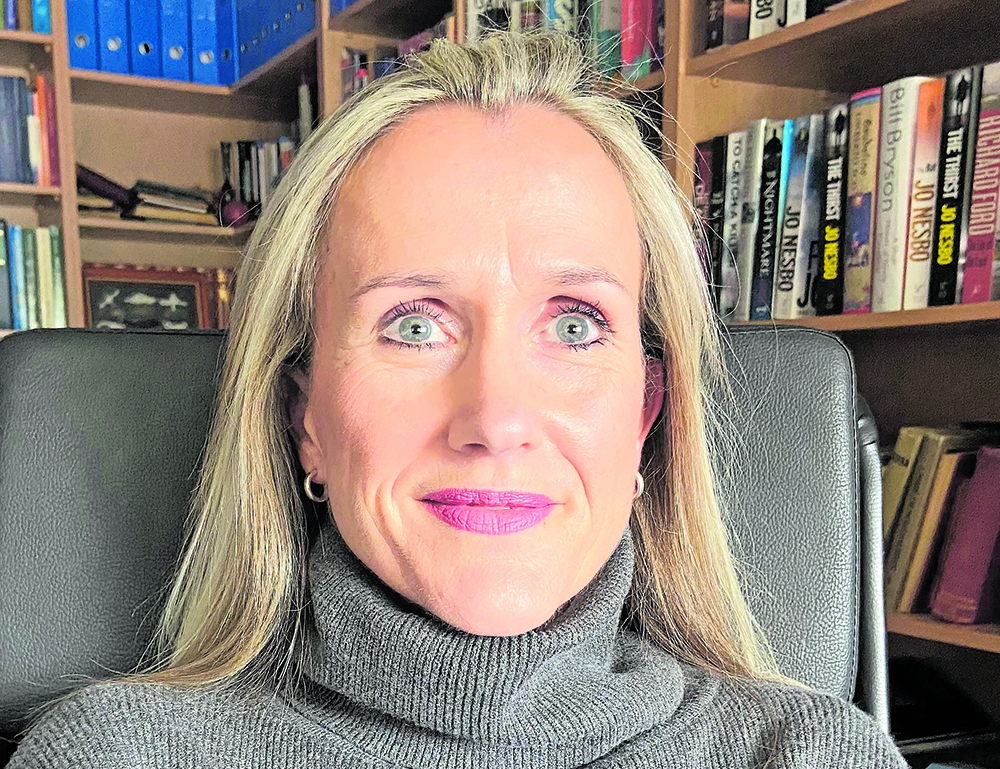 Professor Christine Lochner’s work is helping OCD patients to overcome their intrusive urges
Professor Christine Lochner’s work is helping OCD patients to overcome their intrusive urgesIt’s estimated that, in South Africa, there are 1.2 million people with obsessive-compulsive disorder (OCD) or obsessive-compulsive related disorders (OCRD). However, these conditions are underdiagnosed and undertreated.
“OCD is a neuropsychiatric disorder involving persistent, intrusive thoughts or urges to perform certain rituals, such as washing, arranging, and counting. These urges can’t be controlled for more than a small period of time,” explains Professor Christine Lochner, co-director: South African Medical Research Council Unit on Risk and Resilience in Mental Disorders, a cross-university unit at both Stellenbosch University and the University of Cape Town.
OCD and OCRD can impact life negatively, making it difficult to function satisfactorily. They can take time away from daily life, cause physical, emotional and financial suffering and lead to economic costs to society at large. Lochner notes that OCD is often associated with comorbidities, for example, about 70% of people with OCD have depression.
“OCD is listed as among the 10 most disabling of all medical conditions by the World Health Organisation. While there is growing awareness of the importance of mental health research, not enough time and money is devoted to this area yet,” says Lochner.
In her career as researcher and psychologist, Lochner has made significant contributions in the area of OCD and OCRD. The unit she co-directs researches neuropsychiatric disorders using a multi-disciplinary approach and biopsychosocial focus. This means looking at conditions from multiple angles — biological (such as genetics), clinical (such as using brain imaging with MRIs), psychological, social and environmental.
Since 2001, Lochner has taken the lead in establishing a large database with clinical, genetic, neuropsychological and neuroimaging data from patients with various psychiatric conditions characterised by compulsivity or impulsivity. Currently with just under 1 000 South African patients, the aim is to represent the country’s diverse population across all types of data.
This database facilitates international collaborations with leading scientists worldwide, including international OCD genome-wide association studies. There have been a number of these publications, starting around 2012. Lochner was involved in contributing samples and data and co-writing papers in most of them.
Lochner has a specific research focus on trichotillomania (TTM), a hair-pulling disorder, and excoriation disorder (skin-picking disorder or SPD). Related to this is her work with DSM and ICD Working Groups. “The ‘Diagnostic and Statistical Manual of Mental Disorders’ (DSM) and “International Classification of Diseases” (ICD)” are the go-to publications for classifying mental disorders. Lochner led two international multi-site surveys where the findings resulted in altered diagnostic criteria for TTM and for SPD in DSM, fifth edition. Lochner is now part of an international working group developing clinically useful and structured diagnostic interviews regarding the mental and behavioural disorders in ICD-11.
Another recent accomplishment is being awarded a National Research Foundation grant to conduct a multinational personalised medicine project. It will look at predicting the response to a particular medication based on neuroimaging in OCD patients. The hope is that this will then provide a methodology that can be applied to a range of other neuropsychiatric disorders. — Debbi Schultz
Cleaner water for a clearer future
TW Kambule-NSTF Award: Emerging Researcher
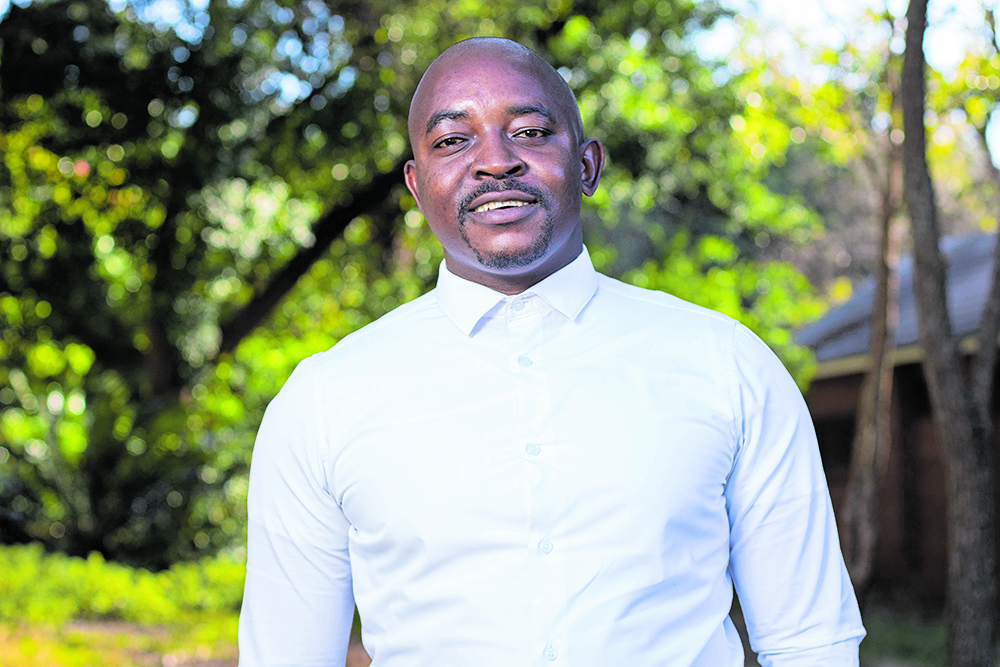 Dr Vhahangwele Masindi has patented many wastewater treatment technologies
Dr Vhahangwele Masindi has patented many wastewater treatment technologiesIn the aftermath of the industrial revolution, (first and second) South Africa has experienced significant pollution of the environment and its precious resources caused by environmental contaminants. This has rendered pristine environments unfit to manifest their intrinsic values and foster life. Of prime concern is the contamination of the environment through acid mine drainage decants, municipal effluents discharge, and pit latrines or septic tanks seepages into groundwater.
Dr Vhahangwele Masindi is a research scientist at Magalies Water and a research fellow at the University of South Africa (Unisa). He has made significant contributions in the field of environmental monitoring and wastewater treatment. Masindi has patented, piloted, and published on numerous wastewater treatment technologies. Consequently, his strong emphasis on waste streams valorisation (stabilisation) and beneficiation to attain circular economy has firmly crystallised.
“The inspiration for my work derives from deep concern about the fact that nearly 900 million people lack access to safe drinking water, according to the United Nations General Assembly, which explicitly recognised, through Resolution 64/292, the human right to water and sanitation and acknowledged that clean drinking water and sanitation are essential to the realisation of all human rights,” Masindi explains.
“The rapid growth in population, along with urbanisation, further mount pressure on the already dwindling freshwater resources through the ever-increasing volumes of wastewater produced worldwide. There is an urgent need to effectively manage wastewater discharges and protect the receiving water bodies and different compartments of the environment.”
Masindi has developed unique and effective technologies for the removal of toxic and hazardous chemicals from acid mine water, municipal effluents, and contaminated ground water. The next step is to convert these “waste” chemicals into valuable resources. The selling of product minerals will then generate revenue that offsets the running costs of this technology, making his technologies self-sustainable.
He was the first person to propose the use of an integrated approach for the reclamation of drinking water and the synthesis of valuable minerals from mine water, and was also the first person to propose the use of South African cryptocrystalline magnesite for the treatment of municipal wastewater. His work on these technologies has been piloted in Emalahleni, Tshwane and Johannesburg municipalities, and has attracted international interest.
Masindi hopes to positively impact society by ensuring that water resources are available and suitable for human consumption, along with ensuring food security through the production of by-product fertilisers that will enhance agriculture.
His water reclamation process aims to stimulate job creation through the establishment of spin-off businesses, as well as preventing the many negative health consequences of contaminated water. Masindi’s work intends to facilitate the production of mineral resources that have various industrial applications, and his fostering of a circular economy in wastewater treatment will reduce the ecological impact of mining. — Kerry Haggard
Burning fires in the name of safety
TW Kambule-NSTF Award: Emerging Researcher
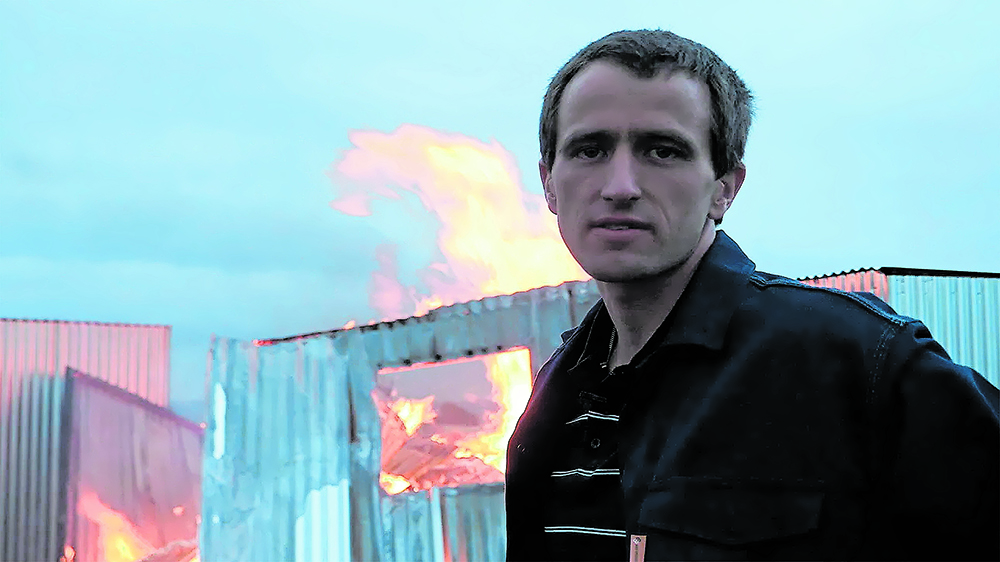 Dr Richard Walls was inspired to design safer buildings after seeing firsthand how fires affect South Africans
Dr Richard Walls was inspired to design safer buildings after seeing firsthand how fires affect South AfricansAfter receiving his doctorate four years ago, Dr Richard Walls established the Fire Engineering Research Unit at Stellenbosch University (FireSUN). This is a dynamic research group seeking to develop fire safety engineering education while pursuing methods to improve informal settlement fire safety and structural fire design.
Coming from a consulting structural engineering background, Walls became involved with structural fire engineering through a PhD thesis. The thesis focused on designing buildings to remain safe when a fire breaks out.
“I got into fire engineering by accident, but once I saw its potential to have an impact — along with the ability to burn things down in the name of science — I continued with the field,” Walls explains. He thinks his love of fire and fire safety also comes from spending time working on the streets of inner-city Johannesburg with the homeless, through a project called Paballo Ya Batho. Plus, he taught Sunday School to children from a burn survivor home “where I saw what fires have done to many people”.
Responding to the dire shortage of fire safety experts in fire engineering internationally, and especially in sub-Saharan Africa, FireSUN has launched a dedicated postgraduate degree programme in fire safety engineering. It’s the first of its kind on the African continent.
Walls has sought assistance from other universities to rapidly develop research expertise in various fire safety fields. He now guides students and post-doctoral students in studying topics such as the behaviour of 3D-printed concrete and Ecobricks, fire spread in informal settlements, and structural design for robustness during fires.
He works closely with local and provincial fire services to reduce informal settlement fire hazard, and has played a leading role in cross-disciplinary analyses of the 2017 Knysna Fire disaster. His ground-breaking work in understanding fire spread in informal and semi-formal communities resulted in a fire safety engineering guideline, which is nearing completion. He also contributed to the United Nations “Global Assessment Report on Disaster Risk Reduction” which looks at how to mitigate the effect of disasters on society.
Walls has secured support from the Lloyd’s Register Foundation under the “Fire Engineering Education for Africa” grant. This allowed a formalised fire safety education programme to be established, and is now also assisting other African universities.
“Ultimately our biggest contribution to society will be producing engineers with the skills and knowledge to protect Africa from the devastating effects of fire, whether that be in mining, urban, wildland, industrial and informal settlement settings,” Walls says. “Hopefully, my ‘arsonist tendencies’ may rub off on many talented young individuals — and some older ones too — who can then have an impact in our industry.” — Kerry Haggard
When management moves research
Management Award
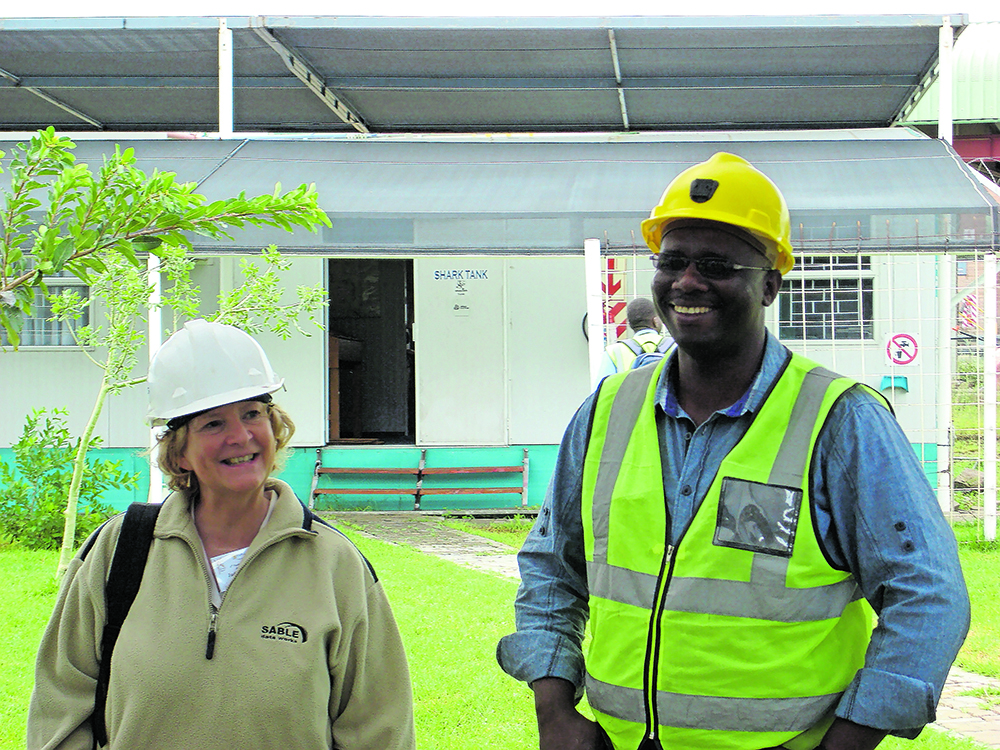 Professor Judith Kinnaird’s work has helped in the discovery of ore deposits such as lithium that add value to society
Professor Judith Kinnaird’s work has helped in the discovery of ore deposits such as lithium that add value to societyProfessor Judith Kinnaird manages the Economic Geology Research Institute at University of the Witwatersrand (Wits) and co-directs Cimera, the Department of Science and Innovation (DSI) and National Research Foundation (NRF) Centre of Excellence. Cimera is an acronym for the Centre for Integrated Mineral and Energy Resource Analysis.
Kinnaird’s work focuses on developing rich connections with industry and generating millions of rands for research. She has supervised numerous projects and teams and explored numerous topics. These range from applying cutting-edge techniques for ore deposit exploration to building societal awareness around resources and the ethical issues regarding sustainable resource extraction.
“My work has helped in the discovery and development of ore deposits that add value to society,” explains Kinnaird. “Lithium for batteries, tin for tin-indium compounds in touch screens, and platinum and palladium for catalytic converters. I’ve also contributed to the training of the next generation of geologists and leaders, especially through the MSc in Economic Geology that I helped to establish at Wits.”
Her work needs to be seen within the context of Wits University’s strategic alignment. The university’s goals include increasing research output and advancing public good through teaching, research, and engagement. All is looking good, with the university doubling its output over five years and producing landmark achievements.
“The Cimera produces world-class research that is relevant to society in general, and the minerals sector in particular,” she says. “Through Cimera I’ve been able to make a difference to the lives and careers of a number of postgraduates. I enjoy guiding students through their research. The stand-out moments of my career are when I see my students graduate with PhDs and MScs and then get high-calibre jobs across the world.”
For Kinnaird, geology has been part of her career DNA since she was eight years old. It inspired her throughout university and has driven her efforts to further education and research in this field. This drive has seen her become the first female president of the 100-year-old Society of Economic Geologists based in Denver, US.
Her projects have involved innovative technological developments that have evolved at pace over the past few years, putting pressure on students and education institutions to keep up. With Kinnaird behind the wheel, numerous projects have taken off at Wits. These include the Tescan Integrated Mineral Analyser (TIMA-X), an automated mineralogy instrument designed for high resolution elemental mapping, and the use of drones to sense data on tin, rare earth and uranium.
Her work involves the rare blend of superb management skills, a deep passion for the topic at hand, and the ability to bring these threads together to weave a tapestry of research, growth, and investment. — Tamsin Oxford
Building world-leading clean energy research capacity
Engineering Research Capacity Development Award
 Professor Josua Meyer heads up a group of academics that help to generate environmentally friendly energy
Professor Josua Meyer heads up a group of academics that help to generate environmentally friendly energyIt was clean energy and changing the conversation around environmental damage that saw Professor Josua Meyer shift his focus to clean energy in 2010, establishing the Clean Energy Research Group (Cerg) at the University of Pretoria (UP). Meyer is professor and head: Department of Mechanical and Aeronautical Engineering of the Faculty of Engineering, Built Environment and Information Technology, UP.
The group, which consists of 10 academic colleagues and up to 50 full-time funded students, focuses on renewable energy using thermal solar (such as concentrated solar power), nuclear and wind. They look at more efficient and suitable heat exchangers used in renewable energy systems. All research contributions within the group have focused on generating environment-friendly energy more cheaply and efficiently, using clean energy sources.
“The generation of clean energy and its consumption — without contributing to environmental damage — is one of the biggest challenges in South Africa, and is an international grand challenge,” Meyer says. “Efficient heat exchangers directly influence the efficiency and energy consumption of electrical power plants and efficiency on the consumption side of industrial processes.”
The impact of his work, and his supervision of students’ work, is significant in that it has found ways to use less energy to produce work and/or power, which in turn reduces pollution and greenhouse gases. More efficient heat exchangers are important to power generation industries, such as processing, manufacturing, air-conditioning, and refrigeration. Meyer and his colleagues and students have also been responsible for the design and construction of more than 10 state-of-the-art experimental set-ups. These are used for leading-edge research into clean energy.
Since founding Cerg, Meyer has supervised 85 postgraduate students, including 24 successful PhD candidates, the majority of whom are black. In that time, he published 179 articles, almost all of which were co-authored with his students, one of which has since been cited in other research 148 times!
In the last 10 years, Meyer and students at Cerg have produced 254 conference papers, with more than 80% of the students presenting the papers themselves. With Cerg funding, every student on average travelled abroad three times to attend international conferences. Of these, 25 won awards for presenting the best papers. His quest for funding students’ research has raised more than R20-million in funding.
“My career highlights are when my students graduate, write an excellent article, or even update me on the progress they’re making at the universities where they are leading research now, such as MIT, Edinburgh, Cambridge, and Oxford,” Meyer says. “I love hearing their feedback about their professional work, just as much as I love getting photos and updates of their families. My hope is that my students will continue with my work, and mentor others too.” — Kerry Haggard
Constructing a sustainable future
Engineering Research Capacity Development Award
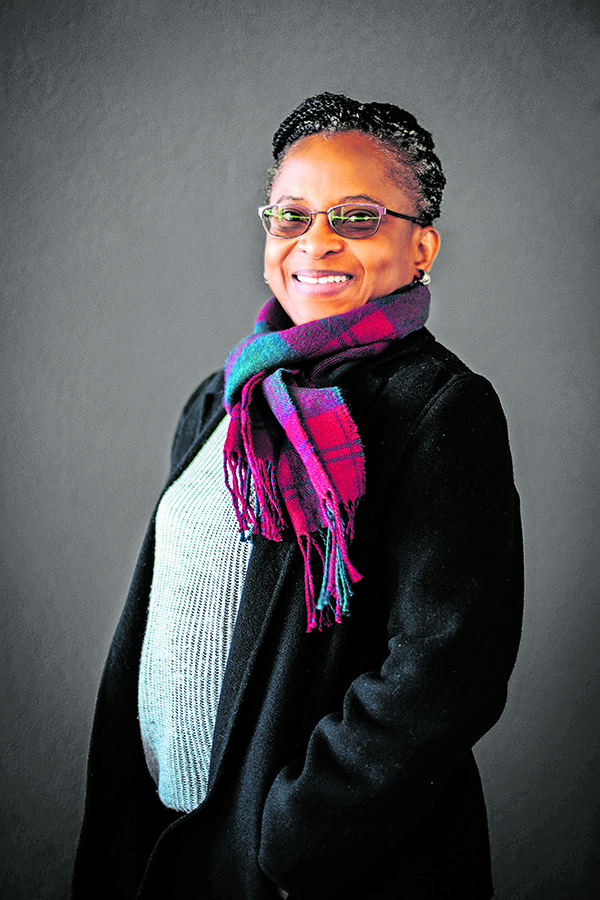 Professor Abimbola Windapo is helping to create jobs and alleviate the impact of construction on the environment
Professor Abimbola Windapo is helping to create jobs and alleviate the impact of construction on the environmentProfessor Abimbola Windapo recognised early in her career the importance of infrastructure, and finding new ways of adapting approaches and materials so that people could have the basic right to accommodation and housing. Her research focus area has been on construction industry development and business and project management from a practice and performance perspective.
Over the past nine years, her research has found that the construction techniques used by industry stakeholders are not aligned with sustainable principles. This has impacted on construction project performance and adherence with health and safety regulations.
“There is so much scarcity in infrastructure in Africa that there was a need for this dialogue to change,” she says. “I started my work in South Africa in response to the high failure rates of many construction companies, particularly in the small to medium enterprise sector, and the poor health and safety records in the industry. There were gaps in knowledge, as well as societal needs, that called for the research.”
There was no previous recipe for contractor development and sustainability. The practices used by construction companies in ensuring health and safety were not established in literature. So, the goal was to establish ways of transforming the construction industry while providing jobs, alleviating poverty, developing scarce skills and reducing the impact of construction on the environment.
Resources for the projects were provided by the University of Cape Town, the Construction Industry Development Board, the National Research Foundation (NRF) Thuthuka, Collaborative Postgraduate Training and Incentive Funding for Rated Research Grants and the Royal Academy of Engineering.
The result is research that delivers continuous, incremental improvements over time on the basis of well-established knowledge in the construction and business management areas. The research process pulled together pilot studies, field work and data, and used mixed methods approaches to enable the output to benefit from qualitative and quantitative views. The work also spanned several disciplines.
“We worked towards the development of a model that allows construction to become more affordable so that we can build increasingly affordable housing and use more cost-effective building materials,” concludes Windapo. “Labour and building materials are two key resource requirements that make infrastructure expensive, with building materials taking up at least 60% of the construction cost. We recognised that if we can find ways of using our local building materials and technologies, we can change the infrastructure conversation.”
To date, the research has resulted in a series of technical papers and reports that have emphasised the cost factor, but also revealed that poor management and poor financial acumen have affected the growth of many companies in the construction industry. The goal is to help the industry overcome these challenges in a sustainable and intelligent way to foster growth and further innovation and change. — Tamsin Oxford
Saving the sharks
NSTF-Lewis Foundation Green Economy Award
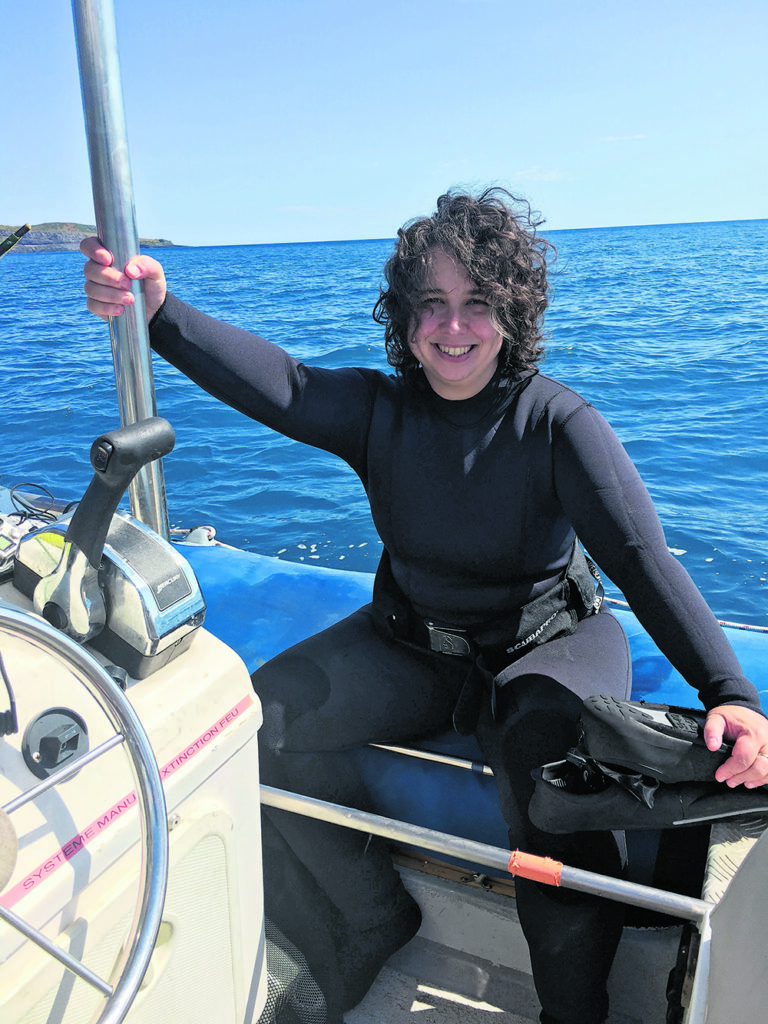 Dr Sara Andreotti is protecting both marine and human lives with the SharkSafe Barrier
Dr Sara Andreotti is protecting both marine and human lives with the SharkSafe BarrierGlobally, shark populations are being decimated. Tourism and people’s desire to swim safely in the sea has seen many of these marine animals killed by nets and other anti-shark solutions implemented on popular beaches. The flip side of the coin is that due to the fear associated with sharks, people avoid beaches where shark attacks happen frequently. This has a heavy financial impact on areas that rely on the tourist economy for income. Stepping into this complex situation is the SharkSafe Barrier, an eco-friendly, shark-specific barrier that protects both shark and beach goer.
“We started out on this project because we wanted to try and resolve the endless conflict between sharks and humans,” explains Dr Sara Andreotti, Chief Operating Officer at SharkSafe. “Sharks in South Africa and other parts of the world have been declining in numbers and among the causes is the uninterrupted use of shark nets and drum lines. These are deployed around the coast to kill sharks and reduce the chances of shark/human encounters — all in the name of tourism.”
So, the team put their heads together with the goal of developing a solution to keep sharks separate and safe. The solution had to be environmentally friendly, shark specific, and capable of protecting human life alongside marine animal life. Enter the SharkSafe Barrier that uses the concept of bio-mimicry and advanced technology to create a barrier that sharks don’t want to penetrate.
The solution leverages the fact that shark swimming behaviour can be altered by strong electromagnetic fields and that sharks won’t enter dense kelp forests. The latter is avoided by most sharks as they can become entangled in the kelp and die. The solution anchors rows of staggered plastic pipes into the ocean floor and then adds a strong magnetic field to the external row of pipes; this then mimics a barrier of kelp for the sharks, with the magnetic field as a further deterrent that sends them on their way.
“The solution is inspired by nature and uses known natural shark barriers in an effective way to prevent them from entering specific areas,” says Andreotti. “We use strong magnets that overpower shark senses and prevent them from seeing clearly in the water. Then we combine this with the thick ‘kelp’ barrier that keeps them separate from the beaches. The solution doesn’t kill marine life and it can be deployed very deeply, behind the surf zone, which many other solutions can’t do. It also requires very little maintenance, so it’s very cost effective.”
The SharkSafe Barrier was developed by a team of researchers from the University of Stellenbosch that includes Dr Andreotti, Professor Conrad Matthee, shark conservationist Michael Rutzen (who played an important role in the design and provided the idea of bio-mimicking the thick kelp), Dr Craig O’Connell (who tested the effect of magnetism on sharks), marine engineer Laurie Barwell, and plastic manufacturer Rory Bruins of Labscheme Allchem. The project pulled together multiple skills and capabilities to create a solution that not only saves sharks and the environment, but tourism as well. — Tamsin Oxford
Wastewater: an untapped resource for the future
NSTF-Water Research Commission (WRC) Award
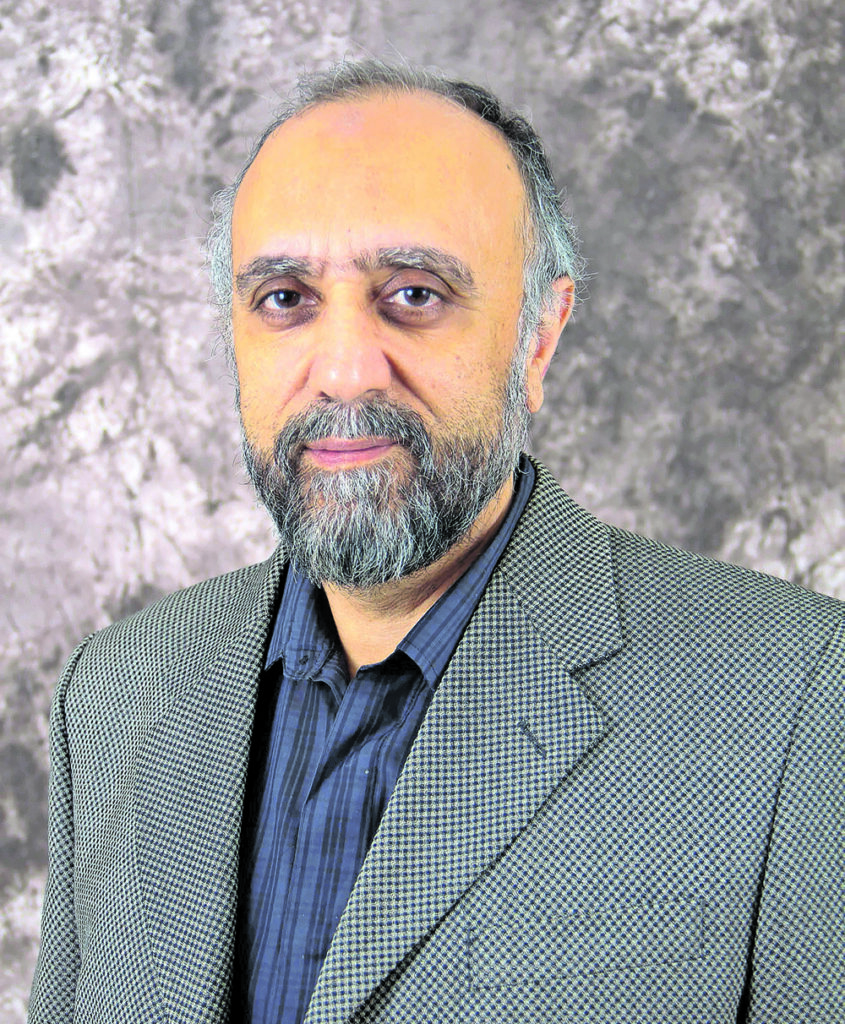 Professor Faizal Bux is providing solutions to water-related challenges
Professor Faizal Bux is providing solutions to water-related challenges Professor Faizal Bux, Director of the Institute for Water and Wastewater Technology at the Durban University of Technology, has had an affinity for nature and science since his youth, and has been involved in water research for 30 years.
“South Africa is a water-starved country and the impact has been further magnified by climate change,” he says. “Access to clean water and sanitation is a basic human right [and this right is] entrenched in the Sustainable Development Goals. I have tried to keep my foot on the ground attempting to provide solutions to local water-related challenges, at the same time producing outputs that contribute to the overall body of knowledge in the water sector, both locally and globally.”
Over the last decade his research endeavours have spanned different projects that have been selected, designed, and executed in close consultation with water sector partners and nongovernmental organisations (NGOs). His core areas of research are in the field of optimisation of wastewater treatment processes, algal biotechnology and wastewater beneficiation. More recently, in conjunction with one of his PhD students, Bux developed a predictive model to pre-empt bulking in full scale wastewater treatment plants. This has shown good potential for application.
“The novelty of our research can be seen in the projects that have reached pilot and demonstration scale, and the large number of manuscripts that have been published in leading International Scientific Indexing (ISI) journals — more than 80 publications with more than 5 200 citations in the last five years,” he says.
Algae biofuels research (that looks into the optimisation of biomass growth and oil yield) was conducted by one of his research teams at the Kingsburgh wastewater treatment plant in the South of Durban. The harvesting and oil extraction technology was created by Japanese partners in a parallel development. Furthermore, there are at least four projects that have potential for commercial spin-offs in the near future.
Bux has also identified that a key limitation to the success of projects is often a lack of engagement with the end user communities. In many instances, this has resulted in the technology being rejected. One of the PhD projects he is currently supervising is researching public perceptions on the potential use of treated wastewater for potable purposes. The findings will have a significant impact on improving the applicability of wastewater reuse.
“I have been privileged for being recognised by my peers in South Africa and internationally for some of my contributions. But the cherry on the top is seeing postgraduates that I have supervised holding prominent positions and making valuable contributions to the water sector in South Africa,” says Bux.
The professor holds fellowships to the International Water Association, Royal Society of Chemistry, Water Institute of Southern Africa and is a member of the Academy of Science of South Africa. — Kerry Haggard
National model for population research
Data for Research Award
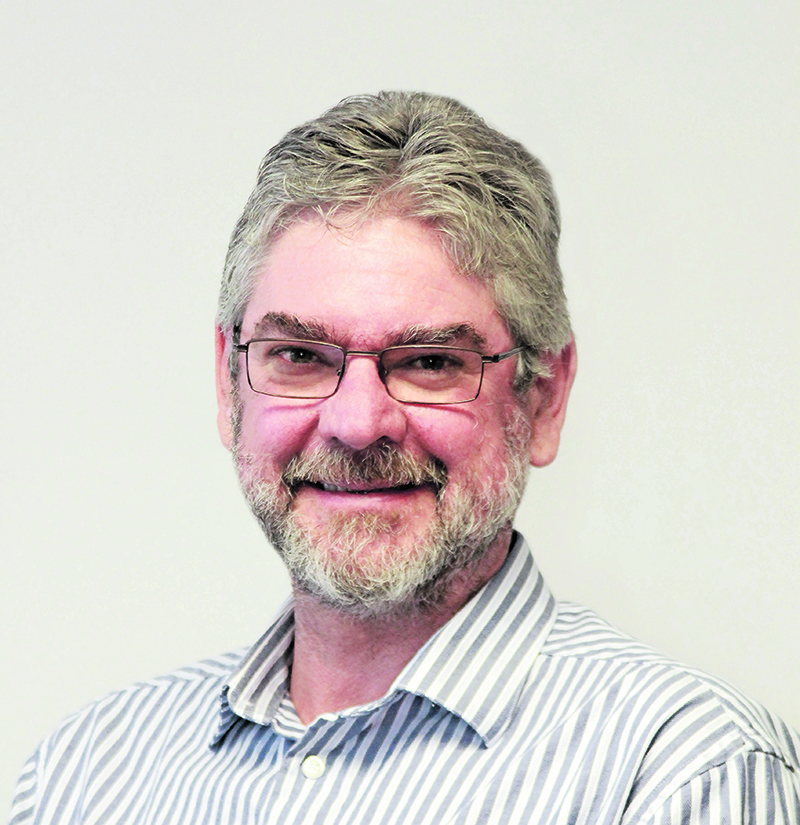 Professor Mark Collinson and Dr Kobus Herbst drive the Saprin model, which provides a harmonised, distributed, national platform for population research
Professor Mark Collinson and Dr Kobus Herbst drive the Saprin model, which provides a harmonised, distributed, national platform for population researchThe multi-stakeholder model is not for the fainthearted. It makes sense in theory — let’s bring everyone together and scale things up — but it’s a colossal undertaking that needs the right leadership and expertise. The South African Population Research Infrastructure Network (Saprin) is such a model, and it works.
“Saprin produces up-to-date information on health and socioeconomic wellbeing, representative of South Africa’s population,” explains Professor Mark Collinson. He is co-director at Saprin and reader at the MRC-Wits Agincourt Unit, University of the Witwatersrand (Wits) School of Public Health.
It is Collinson and Dr Kobus Herbst that comprise the team behind the Saprin concept. Herbst is the Saprin director and a faculty member at the African Health Research Institute (AHRI). Both have extensive experience in population research. Saprin itself is hosted by the South African Medical Research Council (MRC).
Saprin’s central management hub ensures standardised ethical methods and processes and provides access to resources. This allows for harmonisation. Around the central hub are nodes (based at universities) that survey local populations. The output — the anonymised data — is then used, in multiple ways, for research and government decision-making. Open data principles mean open access to data.
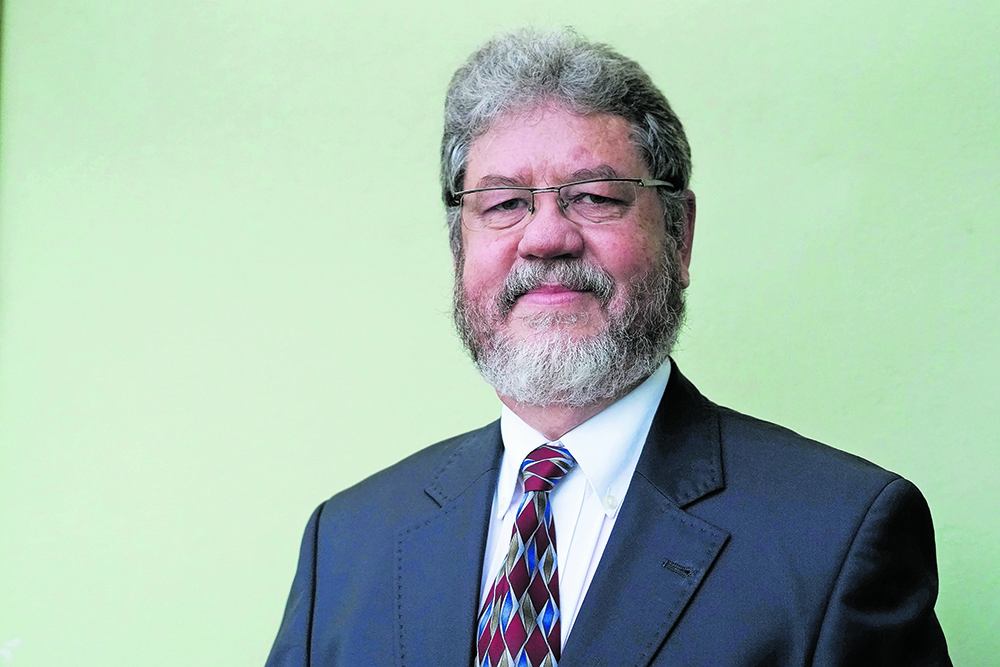 Dr Kobus Herbst
Dr Kobus HerbstCurrently, there are four health and demographic surveillance system (HDSS) nodes, covering 350 000 individuals of all ages. The nodes are based at: MRC/Wits-Agincourt in Mpumalanga, Dimomo at University of Limpopo, and the AHRI linked to the University of KwaZulu-Natal. The fourth is a new node starting in Gauteng called GRT-INSPIRED. It is run by Wits and the Universities of Johannesburg and Pretoria. The aim is to have a minimum of seven nodes across the country.
The Saprin model provides a harmonised, distributed, national platform for population research; a longitudinal collection of population, health and socioeconomic data for geographically-defined sections of poorer communities. Individual and household indicators routinely collected include vital events: births and deaths; residence and migration; socioeconomic status; disease monitoring; and measures of wellbeing represented by labour status, education and social protection.
Each HDSS node is embedded in a community and engagement is seen as essential. This includes providing feedback and links to services such as community nurses. Research operations employ between 400-500 people from the communities.
As part of expanding human capacity in this type of research, there are usually between 20-30 graduate students linked to the nodes.
Beyond the central management hub, the Saprin platform has trained staff, statisticians and laboratory personnel (for blood work and disease testing). This type of centralisation means new HDSS nodes are able to integrate easily into the existing platform — it’s almost as if they can “plug and play”. While harmonisation and integration is key, there is also enough autonomy for nodes to operate in their individual contexts.
Saprin offers access to an extensive, interdisciplinary platform for researchers from universities, science councils and other organisations including regional and international collaborations. Beyond data access, Saprin works with research partners regarding customised data needs, assists with study design and conducts training.
The national research infrastructure is a collaboration between government agencies, universities and local communities. The innovative funding model sees the Department of Science and Innovation fund the platform, and external funders are investing in research projects embedded in the platform.
“Using this model, Saprin aims to contribute to a trans-continental network across Africa,” says Collinson. — Debbi Schultz
Creating space in the spectrum
Innovation Award: Corporate Organisation
 Dr Vhahangwele Masindi has patented many wastewater treatment technologies
Dr Vhahangwele Masindi has patented many wastewater treatment technologiesIt was Nelson Mandela’s Nobel Prize acceptance speech that inspired Dr Fisseha Mekuria to come to South Africa and use his expertise within the wireless communications and research space to find solutions to the connectivity crisis. Today, he works with CSIR next generation enterprises and institutions, developing an innovative spectrum sharing and management system.
The system uses data from the national regulator Icasa, radio propagation standards from ITU (the United Nations’ International Telecommunication Union), and computational modelling algorithms to identify available white space spectrum channels at any location in South Africa. Now network operators can access available spectrum, through their network devices, to provide broadband network services at any geolocation in South Africa.
The CSIR smart spectrum sharing (S3) research project resulted in the development of a suite of technology products, commonly known as the CSIR Geo-location Spectrum Database (GLSD). The GLSD technology suite is hosted at the National Centre for High Performance Computing as a cloud interface service. The CSIR GLSD system is designed to provide spectrum availability information to new entrant network operators and to provide broadband in a “non-interfering way” to existing services.
A focus area regarding developing the GLSD technology is to help countries avoid wasting an expensive national resource — the radio frequency (RF) spectrum — as the GLSD technology can intelligently identify and automatically detect unused RF spectrum areas in the Ultra High Frequency (UHF) bands. These identified spectrum white spaces are made available for broadband internet services, thus improving affordable digital connectivity. This process helps to accelerate the deployment of wireless ICT services, as well as providing impetus for the creation of SMMEs that deploy network infrastructure and provide affordable broadband internet.
Mekuria says affordable broadband internet has been proven as a critical factor in bringing education and equality to people, reducing crime, improving the economy and transforming communities. Access to affordable digital connectivity is vital to unlocking a country’s socioeconomic development potential.
Mekuria says the CSIR smart spectrum sharing technology is future secure. Already there are useful applications in the emerging wireless technologies, such as 5G (fifth generation) mobile standards. Furthermore, he says that sharing crucial resources for improved inclusivity and efficient use of national resources, such as the radio frequency spectrum, is part of what will make the fourth industrial revolution (4IR) impactful and sustainable. — Tamsin Oxford
Cutting crime, increasing jobs and focusing on safety
Innovation Award: Small, Medium and Micro Enterprise (SMME)
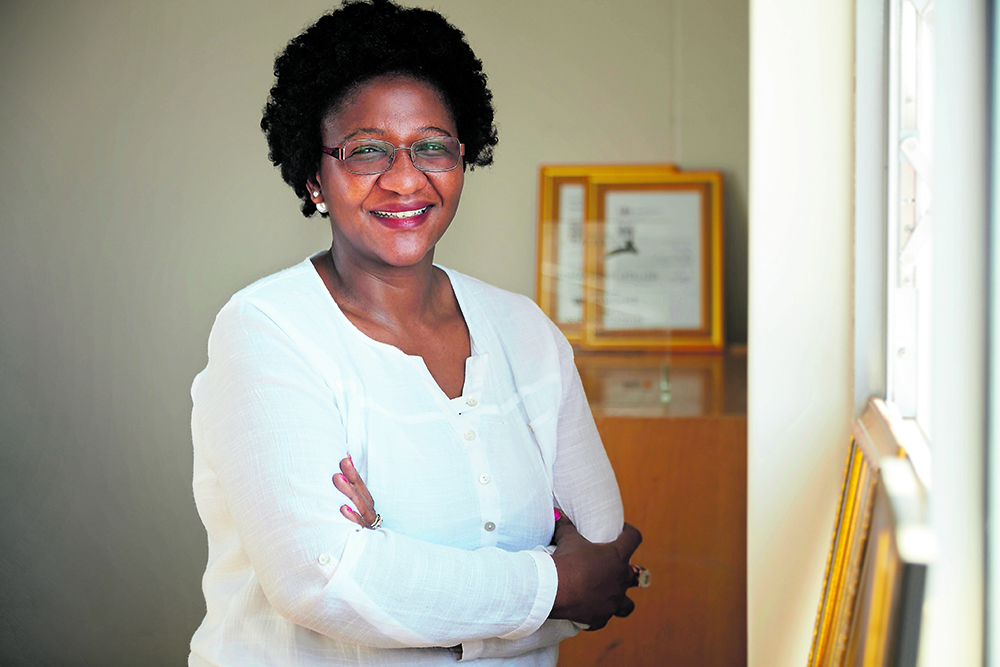 Thuli Mthethwa and Elmarie Pereira devised an effective safety system after their family members were affected by violent incidents
Thuli Mthethwa and Elmarie Pereira devised an effective safety system after their family members were affected by violent incidentsSafety. This is a critical area of concern for many South Africans, especially those who don’t have access to alarm systems, guards, and security companies. Everybody has the right to feel safe and be secure. It’s the principle that underpins the small, medium and micro enterprise (SMME), MeMeZa. The company was founded by Thuli Mthethwa and uses technology and business savvy to protect people from harm.
MeMeZa Shout, as an idea, came about when Mthethwa’s sister was the victim of a violent attack in her family home in Tembisa, Johannesburg. She felt that if her sister had had access to something that could protect her — even a simple panic button — then someone could have come to her aid.
This type of violence is a stark reality for many and inspired Mthethwa to make a tangible difference with a practical solution. She worked with the Innovation Hub and the Centre for Public Service Innovation and obtained funding from public-private partnerships. The result was the creation of the first public alarm system endorsed by the South African Police Services (SAPS) and the government.
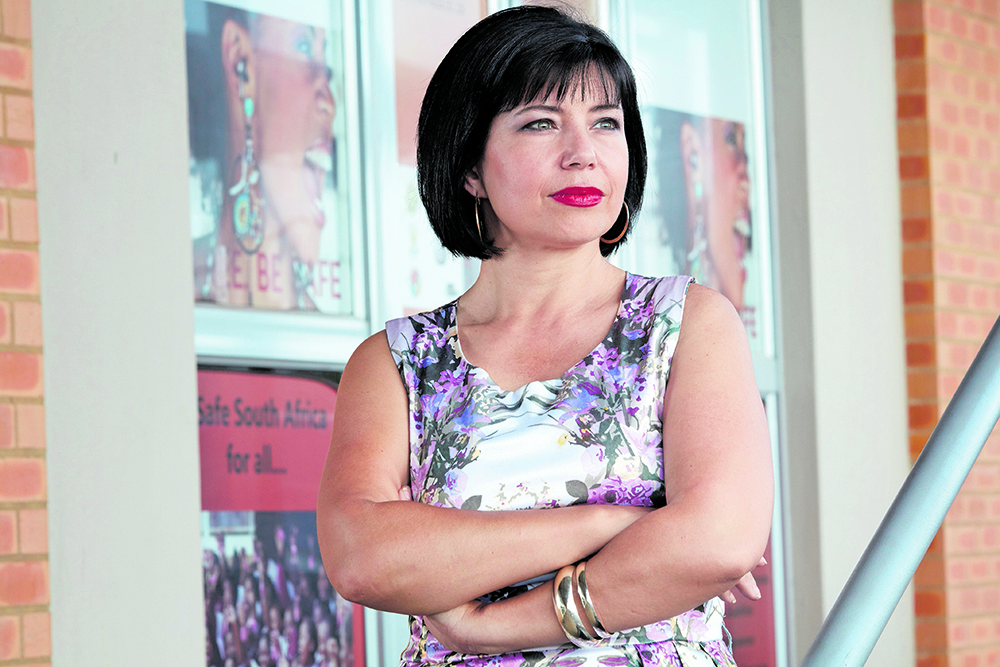 Elmarie Pereira
Elmarie PereiraThe solution uses a back-end management system that collects data and community-based intelligence, allowing for security in high-risk areas. Over the past five years, the MeMeZa team has proven that this relatively low-tech innovation can have an impact, with a significant reduction in crime. The team is led by Mthethwa, a victim of rape and gender-based violence (GBV), and Elmarie Pereira, who lost her sister to GBV.
“MeMeZa’s vision is aligned to the South African National Development Plan on safety that states, by 2030, people in South Africa should have no fear of crime, and that women and children and the vulnerable should feel protected,” says Mthethwa. “Our dream is that every vulnerable person living in South Africa can access safety technology. The next step in our journey is Africa, and replicating the model of public-private partnerships to successfully reduce crime in neighbouring countries experiencing similar challenges.”
The statistics back MeMeZa up. To date, the team has seen as 67% reduction in sexual offences in Mashamplane; a 9% reduction in the murder rate in Diepsloot; 98% theft protection in 150 no-fee rural and township schools and ICT protected labs in Gauteng and the Eastern Cape; a 43% improvement in SAPS response times to crime in low-income communities; and more than 348 000 vulnerable people equipped with the MeMeZa security technology. — Tamsin Oxford
Finding rooibos facts in the fiction
Communication Award
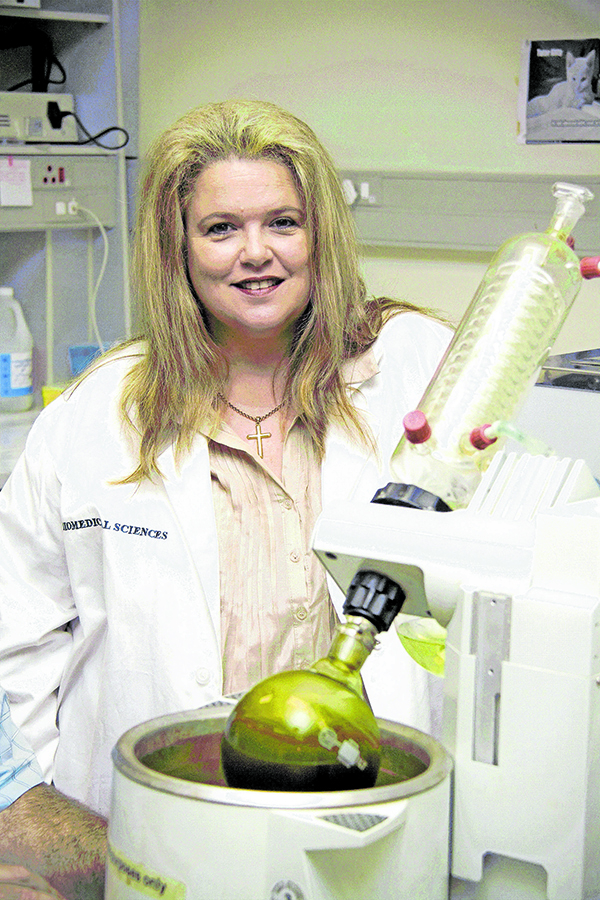 Professor Jeanine Marnewick has found that rooibos does indeed have healing properties
Professor Jeanine Marnewick has found that rooibos does indeed have healing propertiesFor Professor Jeanine Marnewick, the glaring absence of scientifically-supported evidence around health claims made about rooibos herbal tea and the misuse and misinterpretation of existing scientific outcomes set her course into the world of this popular beverage. Her goal? To find out the health properties and science behind this leaf and to then disseminate true facts and information to those who enjoy its flavour and its health benefits.
“Rooibos is a proudly South African product that is easily available and has a strong following, both locally and internationally,” explains Marnewick. “Informing the public of research outcomes is critical to empowering them to make informed decisions when it comes to the plethora of teas and herbal teas available on the shelves. I wanted to scientifically substantiate the anecdotal evidence available on rooibos and share these outcomes with the public and relevant industries.”
It turned out that rooibos does have a scientific leg to stand on. The studies undertaken by Marnewick and her colleagues revealed that adults at risk of developing heart disease — who consumed six cups of rooibos daily for six weeks — showed improved good cholesterol levels.
Another study found that rooibos can have an impact on the enzyme that causes high blood pressure.
As a result of this research and a growing body of scientific evidence behind rooibos, numerous organisations have endorsed its health properties. These include the Cancer Association of South Africa and the South African National Halaal Authority.
“The concepts of antioxidants, polyphenols, and oxidative stress were fairly unfamiliar when I started my research communication activities. Since then public knowledge has increased,” adds Marnewick. “The effectiveness of communication can be seen in the increase in reach — the number of invitations for talks and interviews and the different sectors requiring assistance in advising them on how rooibos should be used or incorporated into their respective industries.”
The science that substantiates the anecdotal evidence around rooibos and health is still in its infancy. By focusing research on relevant diseases in communities, the ongoing goal of Marnewick and her team is to provide people with a complementary approach to prevent or delay the onset of debilitating health conditions.
For two decades, Marnewick has paid attention to rooibos. It’s made a difference to how rooibos is perceived and the benefits it provides. We look forward to more discoveries on the potent abilities of this humble herbal tea.
Investing in tradition
NGO Award
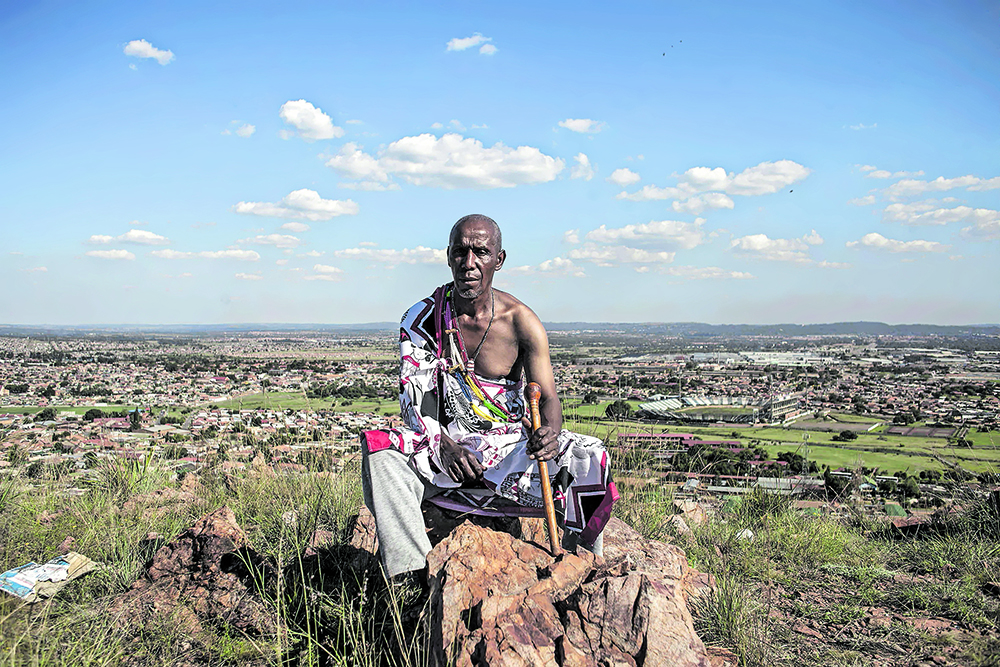 Traditional Doctor Ephraim Mabena wishes to heal people, communities and the environment through the Mothong African Heritage Trust. (Photo: Oupa Nkosi)
Traditional Doctor Ephraim Mabena wishes to heal people, communities and the environment through the Mothong African Heritage Trust. (Photo: Oupa Nkosi)The Mothong African Heritage Trust (MAHT) focuses on excellence in healing, learning and development within culture and history. Over the past 15 years, an old and illegal dumping site that was once used as a killing field by apartheid mercenaries has undergone a radical change. It has become an education site, a place where communities gather and where people learn more about their history, culture, and traditions. The site, called Mothong, is run by MAHT, which is the brainchild of Ephraim Mabena. Asked to turn this decrepit, criminal-run mess into a green and vibrant space by his ancestors, Mabena has turned rape, murder and waste into hope.
“I’m a traditional medicine practitioner and I believe that people in my role have a huge responsibility to people, the community and our history,” says Mabena. “I wanted to do more than just heal people, I wanted to heal communities and the environment. This was my goal for the Mothong project and for the Mothong African Heritage Trust.”
Working with his wife Mabel, who is also a traditional healer, neighbours and with the collaborative support of the Department of Science and Innovation and the Departments of Science and Innovation, Agriculture and Environment, the site was turned into a botanical garden.
Mabena also teamed up with Unisa, the University of Pretoria, Tshwane University of Technology and the Agriculture Research Council to unite science, government and community into one project that is focused on nature conservation and technology innovation. His goal is to use indigenous knowledge systems and modern sciences to change socioeconomic development.
The African Indigenous Knowledge System underpins much of the work done at MAHT, which is now producing skin and medicinal products that use wild plants and herbs in the area.
After clearing an entire mountain, Mabena is clearing the way for job creation, knowledge protection, and community upliftment that will last for generations to come.
“The site is also being used as an education centre to promote indigenous knowledge sharing and to promote the necessity of us taking care of our natural resources and the environment,” he adds. “The end goal is to create a space that is of immense benefit to other people, be they practitioners, community leaders and members, and the next generation. We have to bring back the knowledge that was used by our forefathers to take care of our planet and our plants.” — Tamsin Oxford
The NSTF Brilliants Programme
The Brilliants Programme is a project of the National Science and Technology Forum (NSTF). It recognises at least 18 first-year students studying in the science, medicine and engineering fields.
A young man and woman are chosen from each of the nine provinces based on their marks in physical science and mathematics in the most recent National Senior Certificate Examinations (grade 12), 2019. The Carl & Emily Fuchs Foundation is sponsoring this unique programme
The aims of the Brilliants Programme
• Recognise and honour outstanding performers in matric physical science and mathematics who chose to follow a course in science, engineering or technology (SET)-related studies.
• Inspire and motivate these top performers by:
• Encouraging them to complete their studies and to pursue SET-related careers.
• Exposing them to the Awards, which recognise top scientists, to inspire them to reach for the top.
• Assisting with bursary funding where necessary and possible, sponsored by the Department of Science and Innovation.
Activities of the Brilliants Programme
Normally the Brilliants students are treated to a tour, a stay at Emperors Palace, attendance of the Awards Gala Dinner and a speakers’ programme. This year none of these are possible, but we hope to arrange activities for next year and include the 2020 Brilliants students then.
The reason for the Brilliants Programme
Top results in grade 12 do not guarantee success. Many school leavers and even graduates struggle to find appropriate work and direction in their lives. This is a concern for the SET-related industries, professionals and for the NSTF. By honouring the Brilliants top performers, they feel more encouraged, motivated and inspired to pursue their goals and realise their dreams. They also have a clearer understanding of the many interesting and fulfilling positions and possibilities that the National System of Innovation (which includes scientific research, engineering and industry) has to offer.
How the Brilliants awardees are selected
The NSTF requests the lists of top performers in physical science and mathematics (in the National Senior Certificate exams) from all the provincial education departments. At least two students from each province are selected, based on their performance (of 90% and above for the average of both subjects), as well as their chosen field of study. Thus, the Brilliants Programme consists of top first year students with a passion
for SET, registered at South African universities for science-related qualifications, including the natural sciences, medicine, engineering and mathematics.
